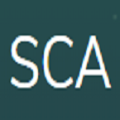Modern software heavily relies on the use of components. Those components are usually published in central repositories, and managed by build systems via dependencies. Due to issues around vulnerabilities, licenses and the propagation of bugs, the study of those dependencies is of utmost importance, and numerous software composition analysis tools have emerged for this purpose. A particular challenge are hidden dependencies that are the result of cloning or shading where code from a component is "inlined", and, in the case of shading, moved to different namespaces. We present a novel approach to detect vulnerable clones in the Maven repository. Our approach is lightweight in that it does not require the creation and maintenance of a custom index. Starting with 29 vulnerabilities with assigned CVEs and proof-of-vulnerability projects, we retrieve over 53k potential vulnerable clones from Maven Central. After running our analysis on this set, we detect 727 confirmed vulnerable clones (86 if versions are aggregated) and synthesize a testable proof-of-vulnerability project for each of those. We demonstrate that existing SCA tools often miss those exposures. At the time of submission those results have led to changes to the entries for six CVEs in the GitHub Security Advisory Database (GHSA) via accepted pull requests, with more pending.
翻译:暂无翻译


